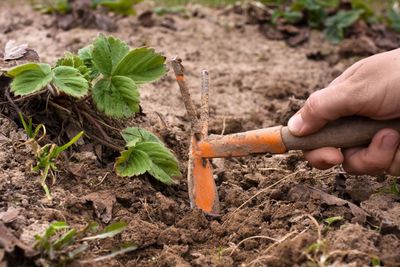What is a Hand Weeder?
When people talk about a hand weeder or a hand-held garden weeder, chances are good they’re all thinking of the same tool. A hand weeder is small, about the size of a regular garden trowel. It has a very similar handle in size and shape. Instead of a trowel’s head, however, the handle is attached to a long, thin metal pole that ends in two forking tines that are roughly 1 inch (2.5 cm.) long. Sometimes there will be an extra piece, like a wedge, running along the length of this pole. This is used as a fulcrum for leveraging weeds out of the ground.
How Does a Hand Weeder Work?
Using hand-weeder tools isn’t quite self-explanatory, but once you know what you’re doing, you can’t fail. Simply find your offending weed and poke the hand weeder into the ground around it a few times to loosen the soil. Then hold the weed by the stem with your non-dominant hand. With your other hand, sink the tines of the hand weeder into the soil at a 45-degree angle about 3 inches (8 cm.) away from the base of the plant. Next, push the handle of the hand weeder straight down toward the ground– the length of the tool should be acting as a lever to lift the weed’s roots out of the ground. This is when that extra fulcrum on the tool comes in handy. Make sure it’s touching the ground when you do this. It helps to pull gently on the plant as you do this, but don’t pull so hard you break it. If the plant isn’t budging, you may have to loosen the soil some more or push the tool deeper in order to get under more of the roots. With any luck, the entire weed will pop out of the ground without leaving behind any roots that will resprout.
